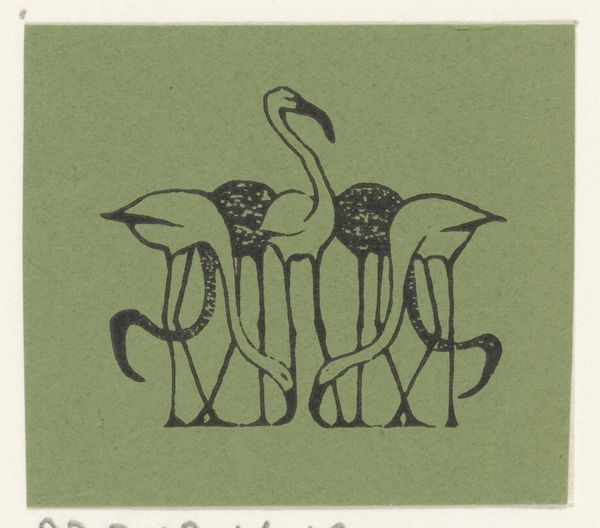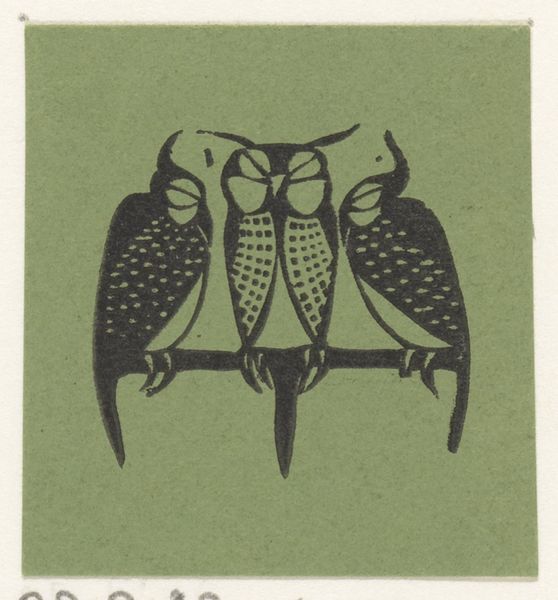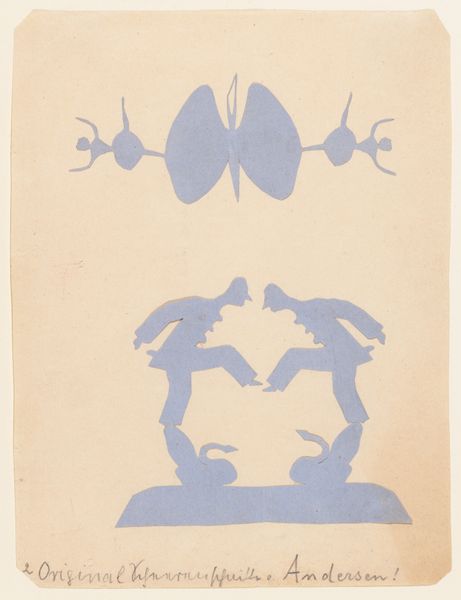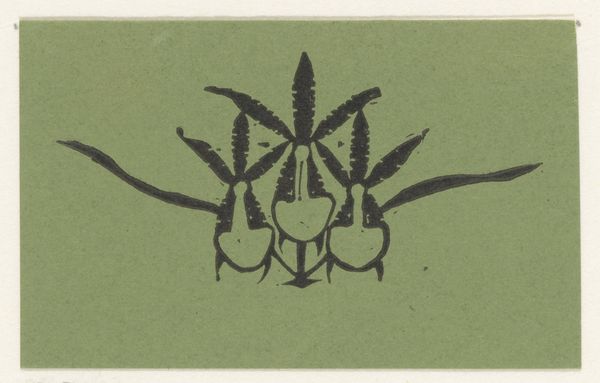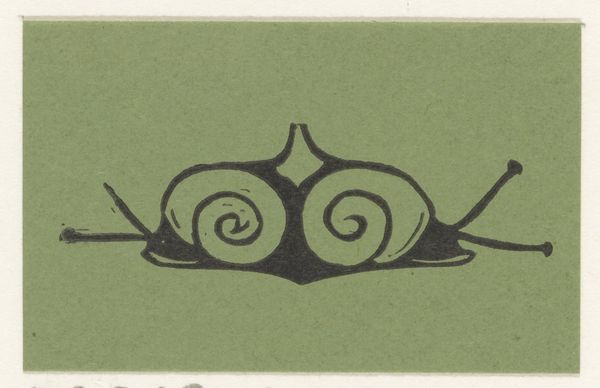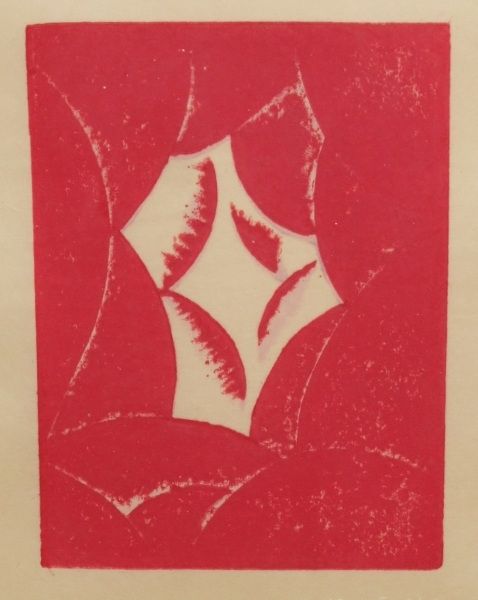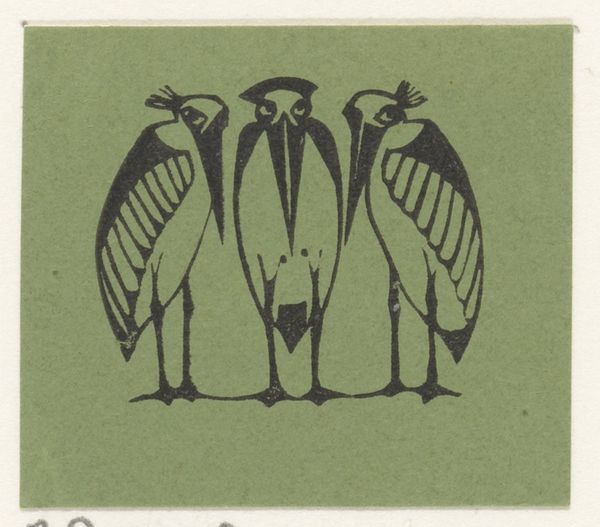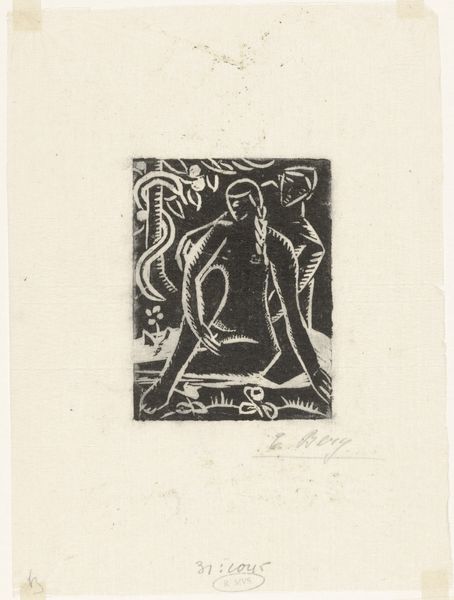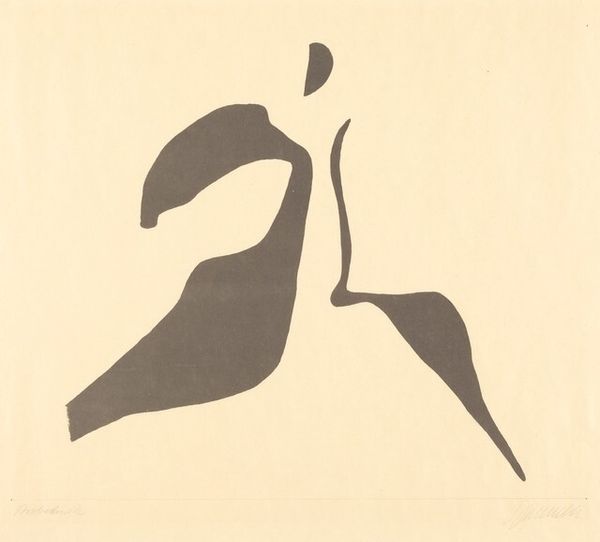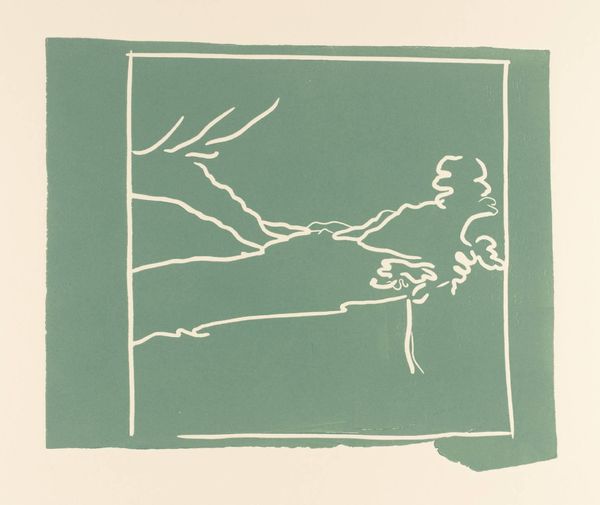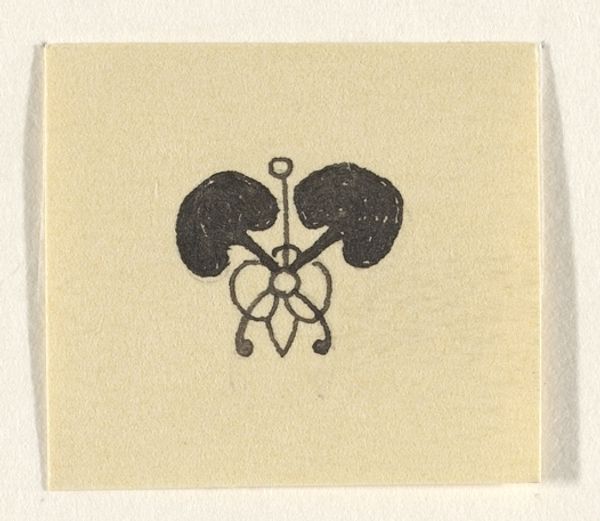
drawing, graphic-art, print, woodcut
#
drawing
#
graphic-art
#
art-nouveau
# print
#
bird
#
figuration
#
flat colour
#
geometric
#
woodcut
#
symbolism
Dimensions: height 41 mm, width 37 mm
Copyright: Rijks Museum: Open Domain
Editor: This woodcut, "Vignet met twee vogels" from 1892, is by Gerrit Willem Dijsselhof. The two birds facing each other give off a feeling of balance, or even confrontation, given the sharp lines. It’s hard to tell what they signify, but how would you interpret this vignette? Curator: Given the historical context, it's tempting to place this within the Art Nouveau movement's broader interest in Japonism and symbolism. Vignettes like this served a crucial public role; appearing in books, magazines, and posters, and therefore shaping public taste. Editor: I see the Art Nouveau influence! I can definitely understand how these little vignettes become a crucial ingredient in everyday imagery. Curator: Consider also how Dijsselhof, embedded within a Dutch context newly interested in Indonesian art, engages in a type of stylized exoticism, or at least borrowing to translate through a local lens. How does the color choice influence your perception? Editor: Now that you point it out, it looks very constructed and definitely borrows from external ideas and aesthetics! It doesn’t necessarily come “from within” the culture it depicts. The pale green is interesting… perhaps it's a symbol of nature that is being carefully manicured? Curator: That's perceptive! It invites us to examine how "nature" is presented and consumed through art, particularly during a time of increasing industrialization. These images shaped ideas about the natural world that we now inherit. Editor: It makes you wonder how different cultures or societies might view those same symbols. I didn't think about this small art piece reflecting such significant socio-historical forces! Curator: Precisely. Art serves as a lens through which we can understand not only beauty, but the power dynamics and cultural dialogues of the past, too.
Comments
No comments
Be the first to comment and join the conversation on the ultimate creative platform.
